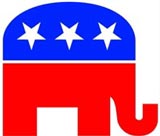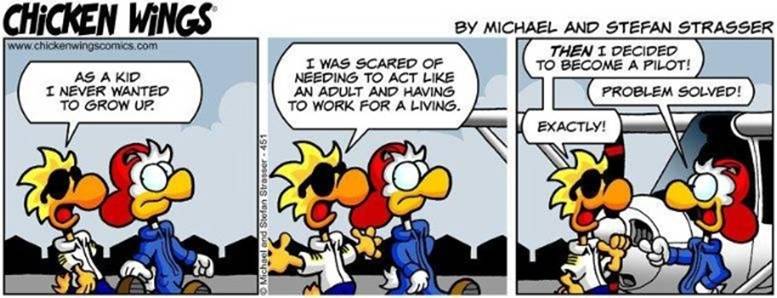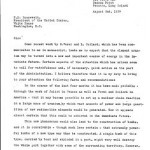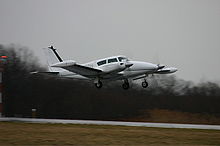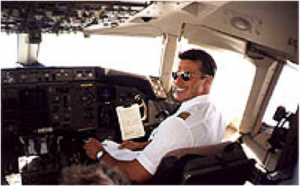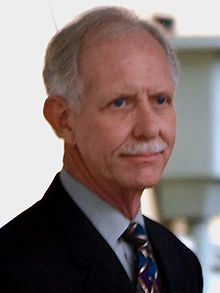 During the initial portion of my USAF Undergraduate Pilot Training (UPT) known as the “Contact” Phase, each student was paired with a primary instructor pilot (IP). This provided continuity in procedures and techniques, especially important when learning new skills requiring a seamless blend of knowledge and eye-hand coordination.
During the initial portion of my USAF Undergraduate Pilot Training (UPT) known as the “Contact” Phase, each student was paired with a primary instructor pilot (IP). This provided continuity in procedures and techniques, especially important when learning new skills requiring a seamless blend of knowledge and eye-hand coordination.
But once a student reached a basic level of proficiency, flying with other instructors paid dividends to the occupants of both seats. Students learned that almost any maneuver could be performed in more than one way, and the IPs effectively provided their own quality control by comparing how students other than their own were being taught.
The Air Force referred to this function as standardization/evaluation, or “stan-eval,” and the mechanism for providing it was simple: at defined points during each training phase, students were scheduled for “stage checks” with an IP they hadn’t flown with previously. These sorties came with an extra dose of apprehension: pass the ride and continue with your training, fail it and end up in the spotlight with more scrutiny than you ever wanted.
 There’s a saying in aviation that “The only thing more important than the takeoff is the landing,” and this reality was reflected in the T-37 syllabus. Most sorties called for practicing multiple “touch-and-goes,” also known as a “crash-and-dash” or “jolt-and-bolt.”
There’s a saying in aviation that “The only thing more important than the takeoff is the landing,” and this reality was reflected in the T-37 syllabus. Most sorties called for practicing multiple “touch-and-goes,” also known as a “crash-and-dash” or “jolt-and-bolt.”
In UPT we didn’t use the standard civilian “rectangular” traffic pattern I’d learned while earning my private pilot’s license. The military “360-degree overhead” pattern begins with an “initial” approach on the runway heading at pattern altitude, typically 1500 feet above airport elevation and at a speed much higher than that used for the landing. When passing over the runway threshold, simultaneously retard the throttles, roll into a bank of about 60-70 degrees, and pull back on the control stick to begin a harder turn than ever used when landing a civilian airplane. The reduced power setting and higher “g” loading ensures that at the completion of a 180-degree turn to the “downwind” leg, the airspeed will be less than maximum for extending the landing gear.
 Lower the landing gear handle, and when the indicators show “three green” (the landing gear are down and locked), lower the flap handle. Very shortly thereafter, with the flaps at the landing setting, begin the “base” turn, which is a continuous, descending turn to line up with the runway on “final” approach.
Lower the landing gear handle, and when the indicators show “three green” (the landing gear are down and locked), lower the flap handle. Very shortly thereafter, with the flaps at the landing setting, begin the “base” turn, which is a continuous, descending turn to line up with the runway on “final” approach.
Although it looked very much different than in a civilian light trainer, flying down final to the touchdown point used the same techniques for coordinating pitch (nose position) and power (throttle position) until the landing was assured. After touchdown, rather than slowing to taxi speed, advance the throttles to takeoff power, and once airborne raise the landing gear and flaps for the climb back to pattern altitude.
To return for another toucn-and-go, at the departure end of the runway (and still below pattern altitude) begin a 180-degree climbing turn to another downwind leg. This maneuver required precise contr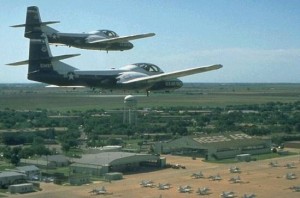 ol of pitch, power, and bank angle to maintain airspeed within the proper range and avoid over- or under-shooting the specified altitude on downwind.
ol of pitch, power, and bank angle to maintain airspeed within the proper range and avoid over- or under-shooting the specified altitude on downwind.
My E-16 stage check on February 11, 1965 involved mostly traffic patterns and landings. The next sortie in the syllabus (E-17) included three rides: “dual” (with an instructor), a solo flight and then another dual ride. According to my logbook, the second E-17D on February 17 was the beginning of a trying time in my UPT experience when I failed (“pinked”) the ride.
Suddenly, I couldn’t fly an acceptable traffic pattern and landing. It was as if everything I’d learned about doing that departed my brain. On February 18th I “made up” the pink by passing a second E-17D and was scheduled that afternoon for E-18, which I also pinked for unsatisfactory traffic pattern and landing performance. On February 24th I passed a review ride, and on the 25th failed the E-18 recheck.
 To say that my stress level had risen to the danger point would be putting it mildly. After two “review” rides, I would be scheduled for E-Elim(ination). Fail that, and I’d be putting Reese AFB and the dream of becoming an Air Force pilot in my rearview mirror. With the remainder of a four-year commitment still to be met, I’d be given an assignment doing something I cared nothing about, while dealing with the personal disappointment and trying to avoid the stigma of being a washout.
To say that my stress level had risen to the danger point would be putting it mildly. After two “review” rides, I would be scheduled for E-Elim(ination). Fail that, and I’d be putting Reese AFB and the dream of becoming an Air Force pilot in my rearview mirror. With the remainder of a four-year commitment still to be met, I’d be given an assignment doing something I cared nothing about, while dealing with the personal disappointment and trying to avoid the stigma of being a washout.
My logbook indicates the first E-Rev occurred on March 2, 1965 with a change of IP, which in retrospect probably played a key role in avoiding what seemed inevitable at the time. My regular IP was a real hard-ass who didn’t like being an instructor and appeared to enjoy acting out his frustration on students.
 Flying an airplane well and being tense are no more compatible than flying when relaxed. Tension can easily create “tunnel vision,” a narrowed state of perception that interferes with a pilot’s ability to accomplish effective task prioritization. Relaxation encourages ignoring tasks altogether. The key is being alert and all of its synonyms: vigilant, attentive, watchful, observant, wide awake. I had no idea what it would take to transition me from tense to alert. Fortunately, my new IP did.
Flying an airplane well and being tense are no more compatible than flying when relaxed. Tension can easily create “tunnel vision,” a narrowed state of perception that interferes with a pilot’s ability to accomplish effective task prioritization. Relaxation encourages ignoring tasks altogether. The key is being alert and all of its synonyms: vigilant, attentive, watchful, observant, wide awake. I had no idea what it would take to transition me from tense to alert. Fortunately, my new IP did.
During the briefing prior to the flight, he pointed out that according to my training folder, I had flown many traffic patterns and landings with no problems. He had no doubt I could do so again, and it was just a matter of me convincing myself. Then he told me that of all the airplanes he had flown, the T-37 was one of the easiest to land. To prove it, he said, “I’m going to fly a couple of patterns with my knees.”
I don’t remember my immediate reaction at the time, but it had to be something to the effect of, “Great. I’m about to washout of pilot training and they give me a nutcase for an IP.” Then he explained that I would handle the throttles while he did everything else, and let’s go fly! We did, and to this day I can still picture it.
 After takeoff, we went to the practice area to review some required maneuvers and then returned to the field. He told me to enter a normal initial approach, and when we were established, he said, “I’ve got the airplane, but you still have the throttles.” Then he put his left hand on the console between the seats and his right hand on the canopy rail to brace himself, grabbed the control stick with his knees, and flew a complete pattern all the way to touchdown.
After takeoff, we went to the practice area to review some required maneuvers and then returned to the field. He told me to enter a normal initial approach, and when we were established, he said, “I’ve got the airplane, but you still have the throttles.” Then he put his left hand on the console between the seats and his right hand on the canopy rail to brace himself, grabbed the control stick with his knees, and flew a complete pattern all the way to touchdown.
I was so mesmerized that at one point he had to remind me that I was responsible for controlling the power setting. After two patterns, he said, “Okay. If I can do that with my knees, do you think you can do it the normal way?”
“Yessir.” And I did, on that review flight and another one the next day. On March 5th, I passed my E-Elim ride and avoided the fate worse than death for a young military aviator.
I’ve often wondered how different life would have been had one T-37 instructor pilot at Reese AFB not recognized that I was allowing my own anxiety and tension to interfere with doing something I knew how to do. And during my many years as an instructor pilot, I never forgot what he taught me: no two students are the same, and it’s my job to figure out what works with each one.
And now, almost 46 years later, I’m thankful for him and especially for the fact that I never had to use my knees to fly a traffic pattern.




